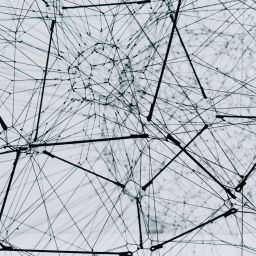One of my favorite projects in my career was an evaluation more than 20 years ago of a multi-country project to promote reading and writing for critical thinking (RWCT).
The process was about integrating students’ prior knowledge with current information as a way to think about new outcomes. It was about information, choices, justification, and decision making.
Engaging in critical thinking was not easy then. I knew how difficult it was for students to absorb new information and genuinely consider options. As a graduate student teaching assistant for an undergraduate class on education policy a decade earlier, we had asked students to pick a policy topic that was important to them and make the case for their policy position. That was the easy part. The next assignment, though, was to argue the opposite position. Very few of them could do it. They were so firm in their beliefs that they had mental blocks in conceiving a different legitimate view.
Fast forward to today and the situation has become even more extreme, and I dare add, dire. Generations of parents who have told their children that anything they believe is right, political tribalism, and social media algorithms that channel people to content that reinforces their own views has made us all very comfortable in our positions. We are happy to share our views with others but quite uncomfortable to reflect and incorporate information that is different from our own. I miss open debates. One of my good friends in college was the head of one of the student political groups whose position was quite different from mine. But we could have meaningful discussions, concede points, and each walk away in a slightly different place from where we began.
Yes, this is a story of a curmudgeonly old man dreaming wistfully about the good old days. But I think the issue is important enough to raise with this group of thinkers for at least three reasons:
- Tribalism is leading to mistrust, misunderstanding, anger, and violence. Looking down the road is bleak. Political divisions that we are experiencing in the U.S. and seeing in other countries continue to rise. The partisans are winning this ugly war! The consequence, though, is inherent mistrust, self-righteousness, and stress. It is not good for our health or our ability to live together with a shared underlying vision for who we are and what we want in life.
- Technology is starting to think for us. The incredible advancement of artificial intelligence is making it too easy for computers to think and communicate for us. What is wrong with that? It takes away our role in shaping our relationships and decisions. At some point, as we lose the skill of critical thinking, we lose control of the direction of the technology and our ability to set our own future directions.
- It will be more difficult to make good decisions about our collective future. Humanity is facing some huge challenges these next few decades. Global warming in and of itself will force decisions about the allocation of space, food, and water. We are already seeing the consequences of these trends in border dispute, migration patterns, and inter-group violence. Without the ability to listen to each other, concede points, and collaborate on new solutions that have collective benefits, tensions and violence will only continue to rise.
I know that these arguments sound alarmist. This is the first “list” that I have written that is skewed towards the negative instead of the positive. But these issues are important enough that we need to address them directly and with open eyes.
Families, communities, and schools play a huge role in helping us to be more reflective. Reviving the art of critical thinking starts with the acknowledgment that each of us does not know everything and has the opportunity to learn from others. It continues in creating safe spaces for people to express views and make arguments with the goal to learn and without talking over others to “win” or show how much cleverer we are than everyone else.
Critical thinking can be brought into every class lesson and in every grade. It can be promoted through teacher questions, student discussions, and structured debates. However, it does require discipline and self-awareness to grow this skill. We must approach discussions with the recognition that others have reasons for their views, many of which are worthwhile even if they are different from our own, and we can learn from their opinions and experiences in addition to our own.
Can you do this? Try a thought experiment that we included in the RWCT evaluation. We asked fourth graders whether looking at someone else’s answers when taking a test was okay. They received full credit only when they could give thoughtful answers on both sides of the issue. How would you score?











